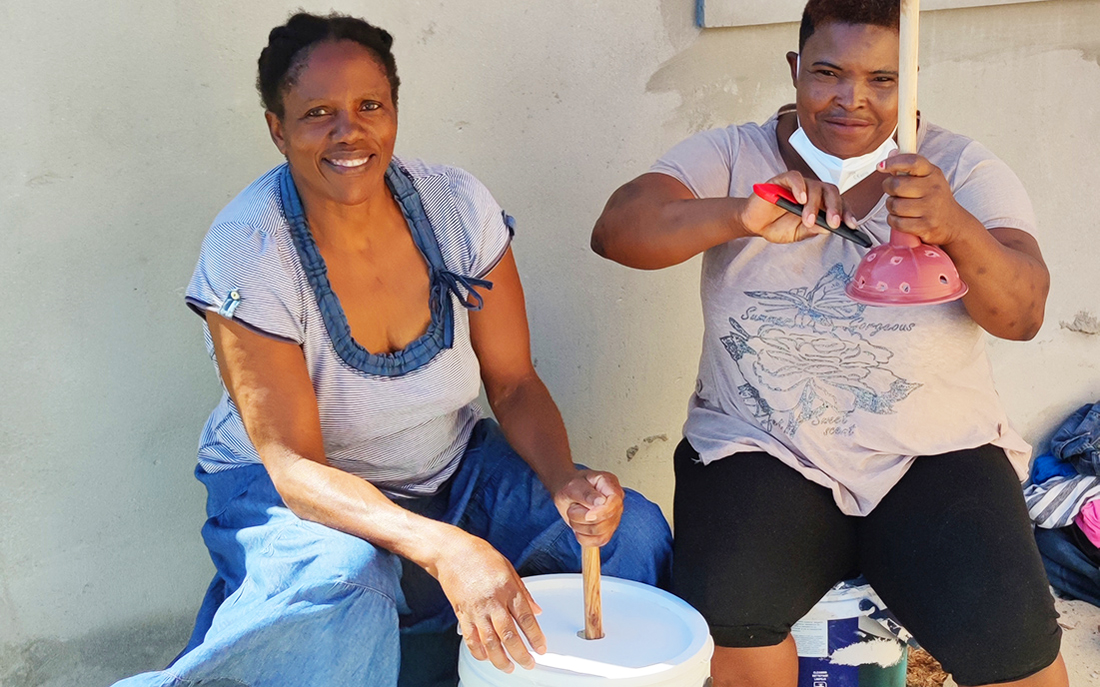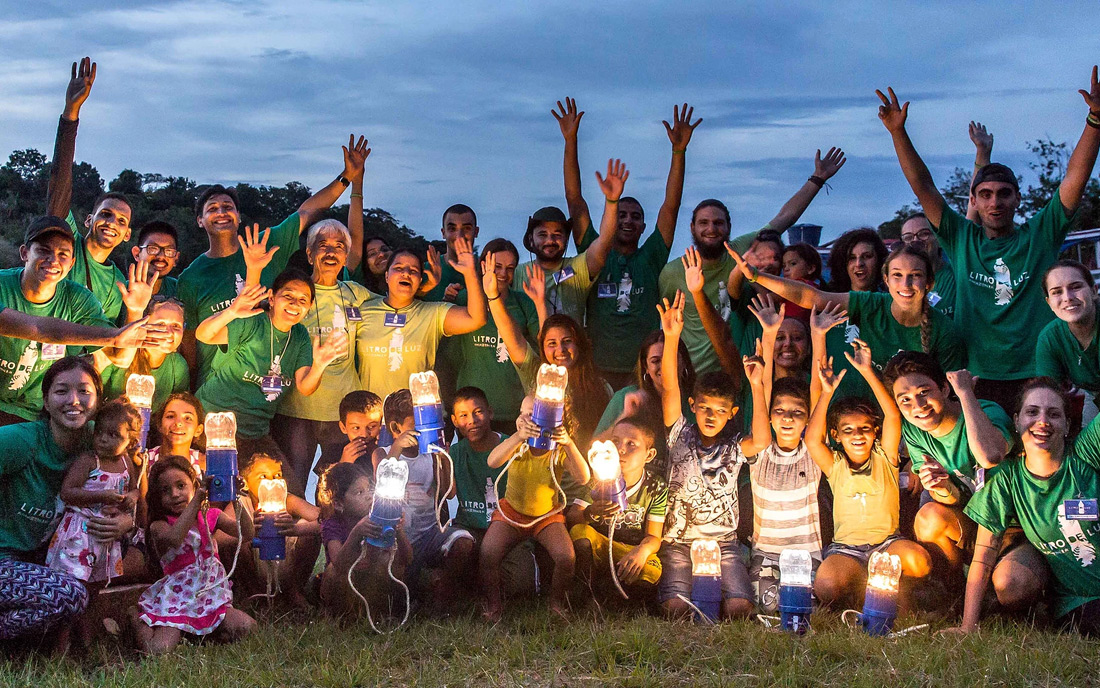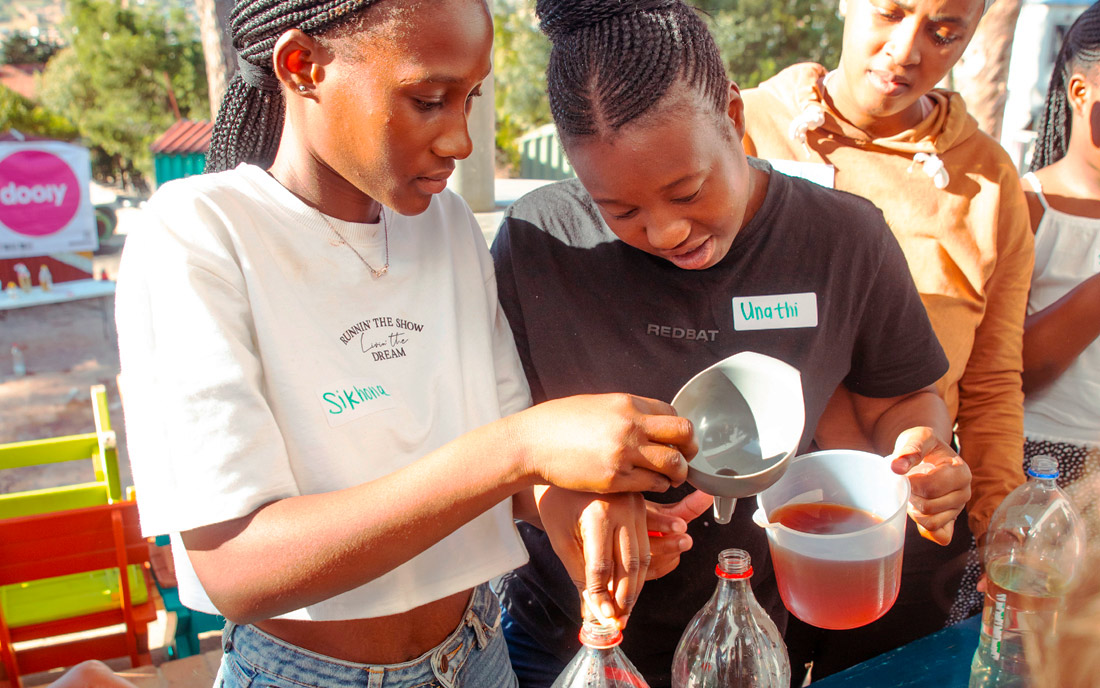Simple instructions, big impact: How DIY solutions lift people out of poverty

We highlight some startups and initiatives that are successfully helping people in underserved regions implement simple solutions to everyday challenges on their own. What all models have in common is helping people to help themselves and transferring knowledge.
Anyone searching for DIY instructions on the Internet today is flooded with ideas and video material. However, most of the offers are life hacks that make life more pleasant. In underserved regions, however, the focus is on real improvements in living conditions and quality of life. The Internet offers a unique opportunity to realize access to simple innovations such as water filters, vertical vegetable gardens or the production of hygiene products for the relevant target groups. Of critical importance, therefore, is a curated approach based on knowledge of the challenges and opportunities faced by residents in poverty-stricken areas.

We are supporting the start-up dooiy – DIY Solutions to Alleviate Poverty
This is exactly what the Berlin-based non-profit company Hack your Shack puts into practice with its app dooiy: a well-researched selection with a high success rate for independent implementation. The life hacks from dooiy aim to empower people to help each other. Simple technical solutions can play a key role in significantly improving the lives of many people.
Low-tech solutions are in demand in order to achieve a high outreach. On the one hand, this includes compact basic knowledge with step-by-step guides, illustrated and presented in an easy language. The problem for people in underserved regions is: Do I understand the instructions? Can I implement the service on my own without prior knowledge, special tools, or money? It is therefore important that the process works in a resource-efficient way and can be implemented with local resources that are easy to obtain and, at best, should cost little.
Beyond that, it’s all about data volume. DIY instructions via video on YouTube are worthless for the target group in underserved areas because data consumption is high and therefore prohibitively expensive for most users of mobile devices, especially since functioning mobile networks are not standard. In addition, explainer videos need to be watched multiple times to capture all the information, and sharing them with third parties can only go viral. Illustrated step-by-step instructions that can also be saved are therefore worlds better for their use and distribution.
The free dooiy app consumes little data, is battery-friendly and intuitive to use. Soon, offline use will also be possible, users with reading difficulties will be supported, and community translations will be offered in many languages.

The most popular product is a DIY fire extinguisher
It all started with the fire extinguisher, the most successful and effective dooiy hack. It is hard for us to imagine what a fire can do. However, for the inhabitants of informal settlements, this is the greatest danger. Candles and kerosene can quickly ignite easily combustible material, fire extinguishers are scarce or not available at all. The dooiy founding team has experienced how quickly a hut can burn down: in 45 seconds. Water connections are rarely “around the corner” and even if they were accessible in a reasonable amount of time, it would take up to 10 minutes to fill the bucket, if the water line is working at all. Often water and electricity are limited to a few hours a day, and illegal power lines are one of the most common causes of fires, along with open cooking stoves. In the narrow maze of paths, it is impossible to get help quickly and thus the fire can easily spread in a short time. That day, 250 dwellings burned down, leaving 1,200 residents homeless.
This experience sparked Marlene Lerch and Christian Fuß’s motivation to make a difference, and soon the DIY fire extinguisher was born. With a few inexpensive household utensils, an effective foam is produced in a bottle. To this day, demand for fire extinguisher training courses is high, making the offering a dooiy best-seller. Since the building courses are aimed primarily at women in the communities, it not only gives them a new sense of security but also boosts their self-esteem – and that’s not just because of the impressive demonstration effect of the fire extinguisher at the end of the course.
Equally popular is the homemade washing machine made from buckets. In addition to its own DIY solutions, the app also features curated partner offerings, such as solar lamps made from PET bottles by Liter of Light and soap making by Viva con Agua. The app is flanked by workshops and the development of a network of multipliers such as educational institutions, NGOs and community organizations. The focus is on do-it-yourself because helping people to help themselves often inspires those around them and promotes the achievement of shared solutions.

Liter of Light – Solar lamps made from old plastic bottles
Founded in 2013 in the Philippines, the global grassroots movement Liter of Light has designed solar lighting for slums using inexpensive and readily available materials. This gives people with limited or no access to electricity a source of daylight. The idea: fill a 1.5 liter PET bottle with clear water and a small shot of bleach, thus preventing the growth of bacteria and algae. The bottle is then glued into the roof with a special adhesive and simultaneously sealed watertight. The water in the bottle now diffuses daylight and brightens the room, with the luminosity equivalent to a 55-watt incandescent bulb. Meanwhile, regional chapters are developing simple solar lamps that provide light even after sunset as do-it-yourself kits thanks to LED lamps, a small solar panel and a rechargeable battery. In many cases, the tried and tested PET bottles are also used here, for example as street lanterns.

DIY solution EcoBricks – A bottle with lots of power
In 2003, Susanne Heisse collected plastic waste for the first time in Guatemala and stuffed it into plastic bottles until there was really nothing left to fit. That was the beginning of a worldwide movement around the so-called Ecobrick, an easy-to-implement solution. What can you do with thin plastic bags and film? Put them in a bottle! That way, the otherwise lightweight material becomes progressively stronger until it becomes a stable building block. According to the Global Ecobricks Alliance, Ecobrick is a conventional PET packaging bottle compactly filled with hard-to-recycle plastic waste. The plastic waste used should be dry and clean to avoid the growth of microorganisms inside the bottle. This can be used to build furniture or successfully used in the construction of houses and schools, although the blocks do not meet any common safety standard. Ideally, this is done for circular and spiral building applications, but modules can also be assembled with the help of silicone. Currently, the vision “Project Wings: The World’s largest recycling village” is being implemented on the edge of the Indonesian rainforest. An education and awareness centre for children and adults is being built there to draw attention to the problem of waste.

Low-Tech-Lab – Collective intelligence to spread useful innovations
All over the world, people are using the resources at their disposal to develop innovations and solutions to solve key problems in their everyday lives and thus raise their standard of living. This often involves adapting simple and often traditional technologies. These low-tech technologies, unlike high-tech ones, require no special know-how and very little financial resources. An open-source database collects and documents existing and proven solutions and develops new concepts. The tutorials and instructions make it possible to provide people in the most diverse areas and regions with valuable know-how, instruments and solutions that they can produce themselves and easily maintain and repair. A classic example: small farmers sell part of their harvest at regional markets. To ensure a longer shelf life, the produce needs to be refrigerated, but money and energy supplies are scarce. This is where a non-electric clay pot refrigerator, the traditional Arabic “zeer pot,” can help because it works based on evaporative cooling and has been used for centuries.
MORE ABOUT THE PROJECT

dooiy
We are supporting dooiy in June 2023 with the proceeds of GOOD. You can find out more about it on our project page:
Fragen, Kritik, Anregungen? Schreibt uns!
Andreas Renner, Co-Founder GOOD: andreas@good-search.org
